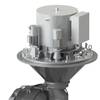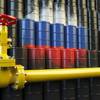DNV GL: First AiP for Scrubber Manufacturer in China
DNV GL has awarded the Chinese scrubber manufacturer Shanghai Bluesoul Environmental Technology with an Approval in Principle (AiP) in recognition of the technical feasibility of the BlueSulf scrubber system. The AiP is the first of its kind for a scrubber according to the new DNV GL rule set, and the first for a Chinese scrubber manufacturer. DNV GL will also provide advisory services to Bluesoul, including hardware-in-the-loop testing, simulations using the DNV GL COSMOSS tool and analyses using computational fluid dynamics (CFD).
“We are very pleased to be the first Chinese supplier to receive this AiP and it demonstrates BlueSulf’s design in compliance with DNV GL class rules requirements, by using the sodium alkali method to clean exhaust gases. We have signed three scrubber projects with Chinese and European owners and we are also in negotiations for several potential retrofit and new building projects. Thanks to DNV GL’s extensive experience in scrubber technology and our continued collaboration, we are confident that we will gain a large share in the scrubber market,” said Jacky Chow, Chief Operating Officer of Shanghai Bluesoul, at the AiP handover and contract signing in Shanghai.
“For us at DNV GL, this is the first project with a Chinese manufacturer, where we will provide such a comprehensive set of services, ranging from the initial AiP to advisory services and the final certification. This project is a global effort and involves our local specialists in China as well as support from scrubber classification and advisory experts based in Norway, Germany and Greece. We are very pleased about the trust Bluesoul has placed in us and look forward to working closely with the company now and in the future,” said Vincent Li, DNV GL Maritime Regional Business Development Manager in Greater China.
Shanghai Bluesoul’s Bluesulf scrubber is a hybrid system that can switch between open and closed loop mode. This type of system is the most popular at present, as it allows greater flexibility to adjust to changes in water salinity and requirements in different ports. In some areas the use of open loop scrubbers has been prohibited. Able to operate both on seawater and fresh water, the design reduces the sulphur content in exhaust gas to 0.1 per cent or less, ensuring compliance with the requirements of the Chinese Emission Control Area (0.5 per cent) that has been in force in eleven ports in China since 1 January 2017 and the upcoming global sulphur cap.
“These regulations have created a new market for scrubbers in the region and we are pleased to be part of that and support customers in developing safe, reliable and efficient exhaust gas cleaning systems,” adds Fabian Kock, Head of Section Safety and System, DNV GL Approval Centre China.
Hardware-in-the-loop testing
DNV GL is the only classification society to offer hardware-in-the-loop testing on scrubber automation systems through its Marine Cybernetics team. These tests are carried out in a virtual environment, enabling experts to check whether a scrubber control system is robust enough to withstand the expected stresses. By the time an automation system goes into operation at sea, its performance has been fully verified down to the individual line of software code.
DNV GL COSSMOS
DNV GL COSSMOS (Complex Ship Systems Modeling and Simulation) is a simulation tool used to assess and optimize complex integrated ship systems fast and accurately with respect to energy efficiency, emissions, costs, and safety. COSSMOS can support scrubber manufacturers during the design stage, for example by verifying the pump capacity and the correct wash water quantity, according to the specific smoke amount of the intended vessel. It can also identify the PH value of the water a vessel will operate in, in order to verify the design and calculations, as well as reduce the risk of additional production costs.
CFD analyses for scrubber systems
MARPOL MEPC.259(68) requires sufficient dilution of a scrubber’s acidic wash water with respect to the limiting minimum pH value, at 4m distance from the discharge outlet. Computational Fluid Dynamics (CFD) is accepted as an equivalent substitute for in-situ measurements at sea. Using CFD analyses, DNV GL can also provide design optimization recommendations for different components, such as the scrubber discharge outlet arrangement, in order to improve the physical dilution of wash water.











